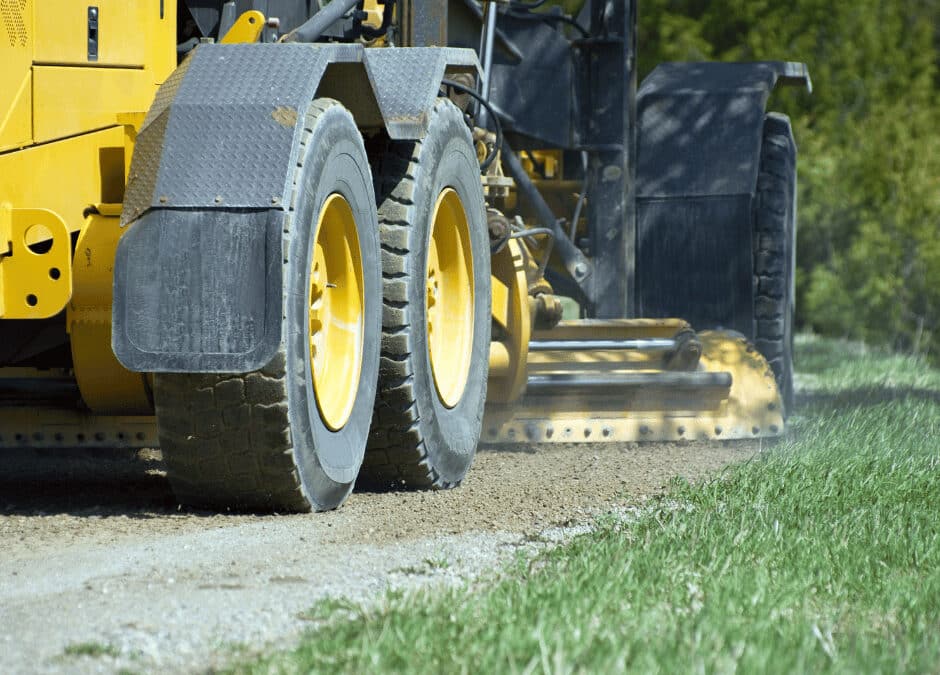Land grading is the process of sloping the ground to direct water runoff. It is important to grade land around structures such as homes and businesses to prevent water damage. Poor land grading can lead to flooding, soil erosion, and foundation problems. When grading land, it is important to create a slope that will allow water to flow away from the structure. The steeper the slope, the better the drainage will be. In some cases, berms, swales, and French drains may be used in addition to land grading to improve drainage. By taking these measures, you can help protect your property from water damage.
Why Grade the Land?
One of the most important factors in the success of any construction project is the condition of the land. If the land is too soft, the foundations may not be able to support the weight of the structure. If the land is too steep, it may be difficult to build a stable foundation. That’s why it’s so important to grade the land before starting any construction project. Grading involves leveling off the land so that it is flat and even. This helps to ensure that the foundation will be stable and that the construction process will go smoothly. In addition, grading can also help to prevent soil erosion and other environmental problems. By taking the time to grade the land before starting a construction project, you can help to ensure that the project is a success.
What’s the Land Grading Process?
Land grading is the process of shaping and sculpting the land to create a specified grade or slope. The process of land grading can be used for a variety of purposes, such as preparing a site for construction, drainage, or landscaping. Land grading typically involves the use of heavy machinery to move large amounts of dirt and rock. The first step in land grading is to establish the desired grade or slope. This is usually done with the help of surveying equipment. Once the target grade has been determined, the next step is to remove any obstacles that might prevent the land from being graded to the desired specs. This might involve clearing trees, stumps, and large rocks. Once the land has been cleared, the next step is to start excavating and moving the earth to achieve the desired grade. This process can be labor-intensive, but it’s essential for ensuring that a construction site is level and safe. In some cases, land grading might also involve compacting the earth to prepare it for construction. The process of land grading is complicated, but it’s essential for ensuring that a site is ready for development.
What Are the Different Types of Land Grading?
Grading can be done by hand or with heavy machinery, and the methods used will vary depending on the size and type of project. Some common types of land grading include excavating, filling dirt, and drainage. Excavating is the most common type of land grading, and it involves removing soil to create a level surface. Fill dirt is used to fill in low-lying areas, and it can be compacted to create a stable foundation. Drainage grading helps to reduce runoff and channel water away from buildings and other structures. By understanding the different types of land grading, contractors can choose the best method for their projects.
What Are the Benefits of Land Grading?
There are many benefits to land grading, and it can be an effective tool for solving a variety of problems. One of the most common benefits is that it can help to improve drainage. By altering the slope of the land, you can encourage water to flow away from problem areas, such as foundation walls or basement windows. This can help to prevent moisture damage and reduce the risk of flooding. In addition, land grading can also be used to level out a site in preparation for construction. By creating a level surface, you will make it easier to lay a foundation and avoid costly mistakes. In short, land grading is a versatile tool that can offer many benefits. When properly executed, it can help to improve drainage, level out a construction site, and even prevent flooding.
What Impacts the Cost of Land Grading?
The cost of land grading can vary depending on a number of factors, including the size and slope of the land, the type of soil, and the equipment needed. The cost also depends on the amount of work that needs to be done. For example, if the land is mostly level and has a gentle slope, it will take less time and effort to grade than if the land is hilly or has a steep slope. The type of soil also affects the cost, as harder soils are more difficult to dig and move than softer soils. Finally, the type of equipment needed will also impact the cost. If special equipment is required, such as a Bobcat or backhoe, the price will be higher than if only a shovel and wheelbarrow are needed. Overall, the cost of land grading can vary depending on a number of different factors.
